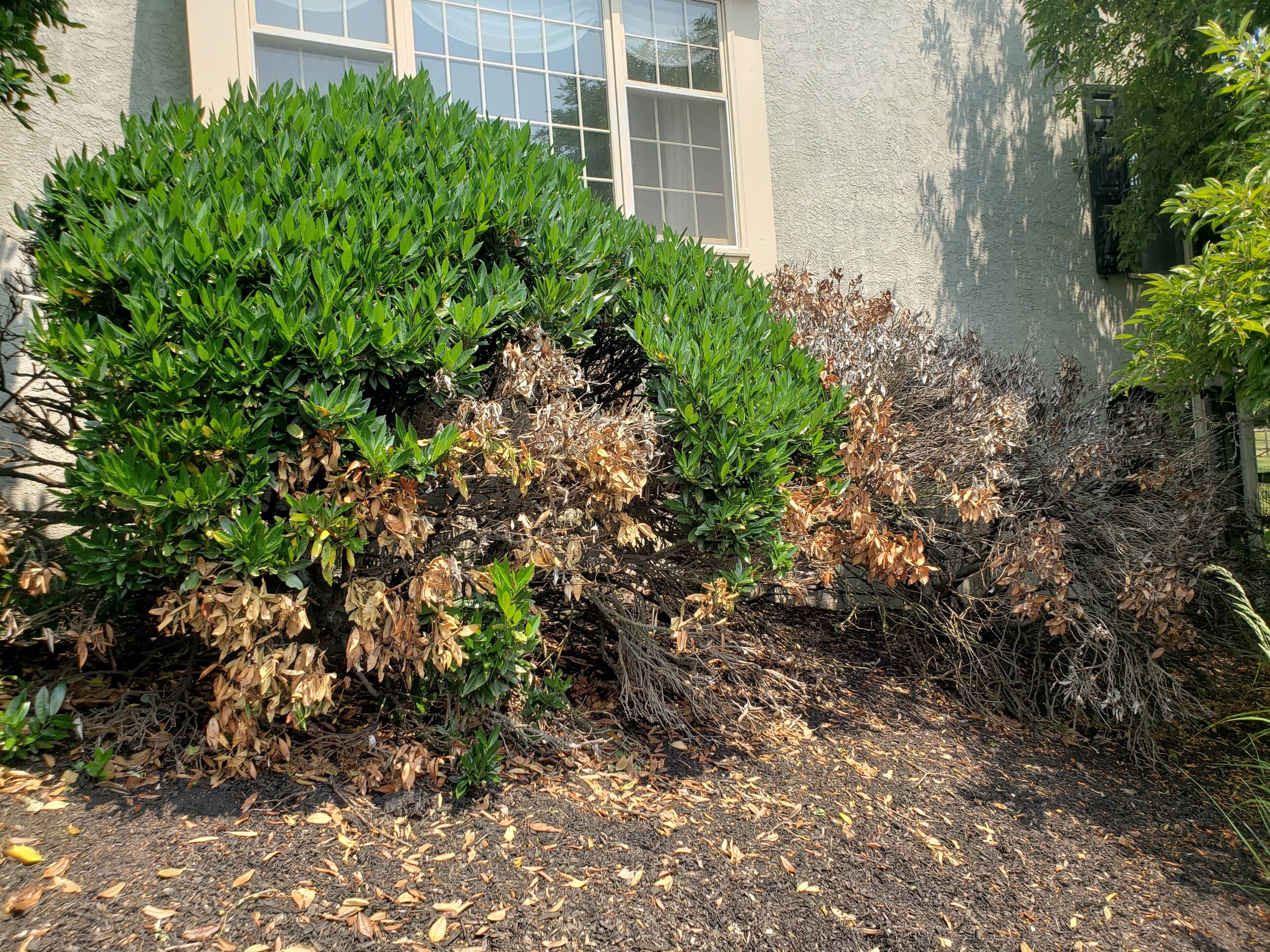Insects and Mites
Insects damage and destroy ornamental plants by chewing on the leaves, piercing the leaves, trunk or branches and sucking out the sap, or boring through the trunk and into the sapwood or heartwood of the tree. Common or interesting insects I have found in Pennsylvania landscapes are found below.
Hemlock Wooly Adelgid
Hemlock Wooly Adelgid (Adelges tsugae) is a piercing/sucking insect that attaches itself the base of needles of Eastern Hemlocks (Tsuga canadensis) and feeds on tree sap. It coves its body in a distinctive, white waxy coating that protects it from most contact insecticides. It spreads quickly, often defoliating and killing hemlocks in 2-4 years. It can be managed and eliminated with sprays and systemic insecticide applications.
Psyllid
Psyllid (Psylla buxi) is common pest of ornamental boxwoods. It is a piercing/sucking insect; its feeding patterns cause a noted ‘cupping’ or inward curling of the growing tips. It leaves a white, wooly residue on the leaves it feeds on. It is a vigorous jumper, and usually jumps away if the bush is disturbed. It can be eliminated with systemic insecticides and sprays.
Spider Mites
Spider mites are very small and hard to see, but their webbing is easily visible, as is damage caused by their feeding, which appears as a ‘stippling’ of faded scratches across what would be an otherwise deep green leaf surface. Heavy mite feeding results in a general loss of chlorophyll and color in the leaves, leaving leaves and needles yellow or brown. They are not insects and cannot be controlled with insecticides; miticides that specifically target mites are required. Their populations are large, reproduce constantly, and can develop selective resistance when sprayed repeatedly with the same miticides. For this reason, The Tree Doctor always alternates miticide products between every application.
Scale
Scale insects came in a variety of shapes and sizes, attack a large number of common landscape plants, and do severe damage. Their presence is often overlooked because they are small and can be similarly colored to the bark. Most scales have coverings that protect them from contact insecticides. Scale problems are best addressed through sanitation pruning and systemic insecticides.







